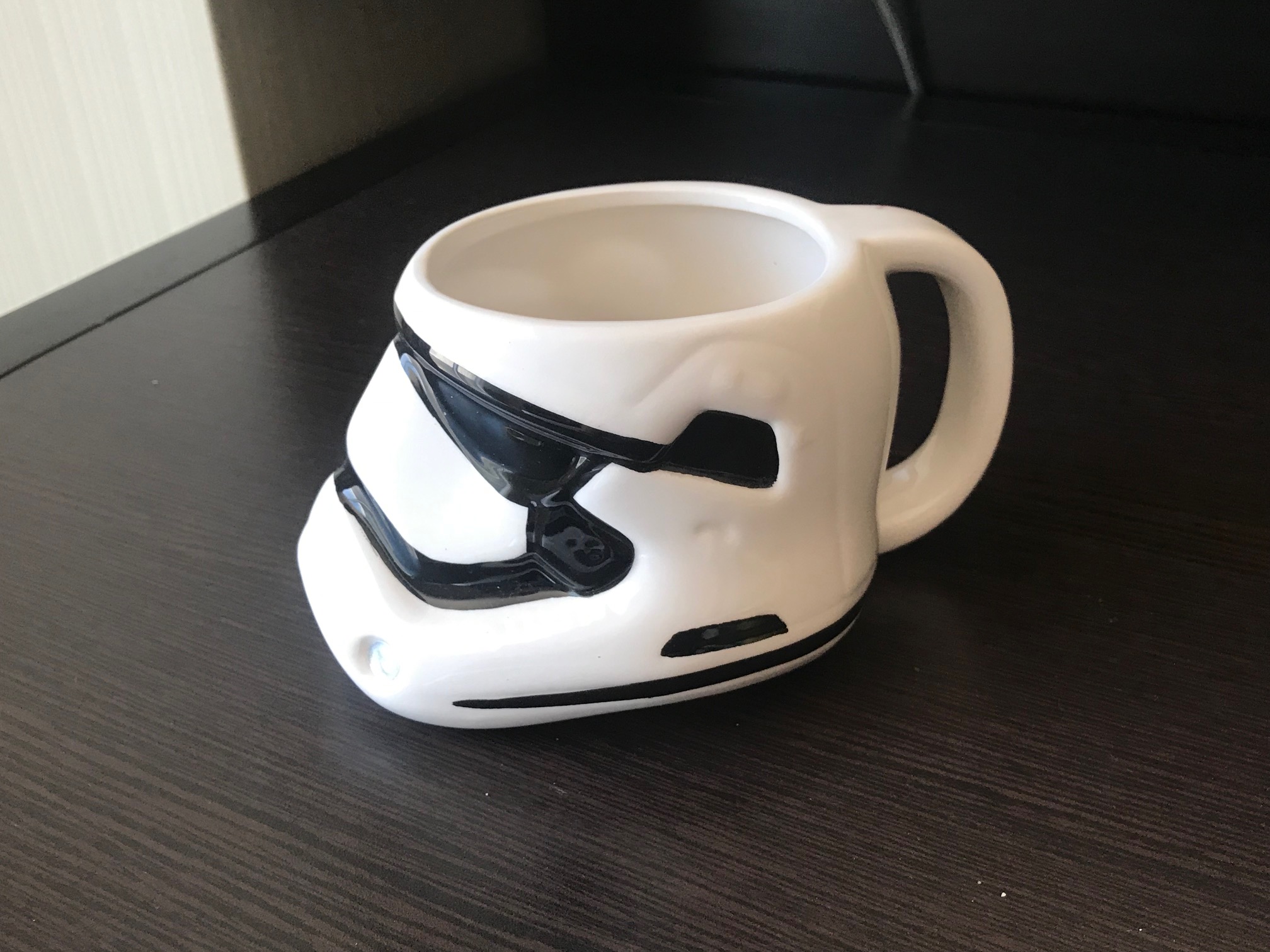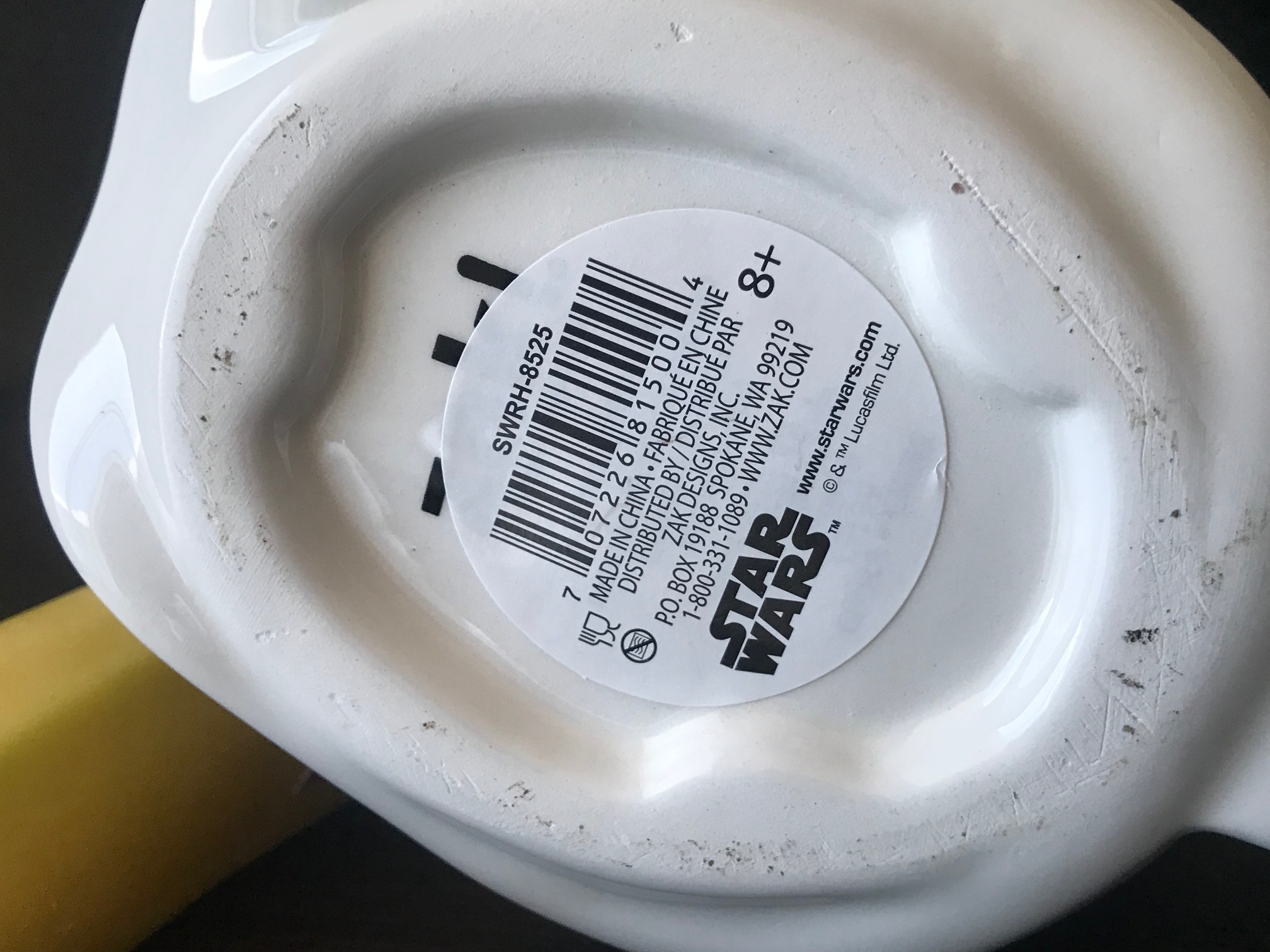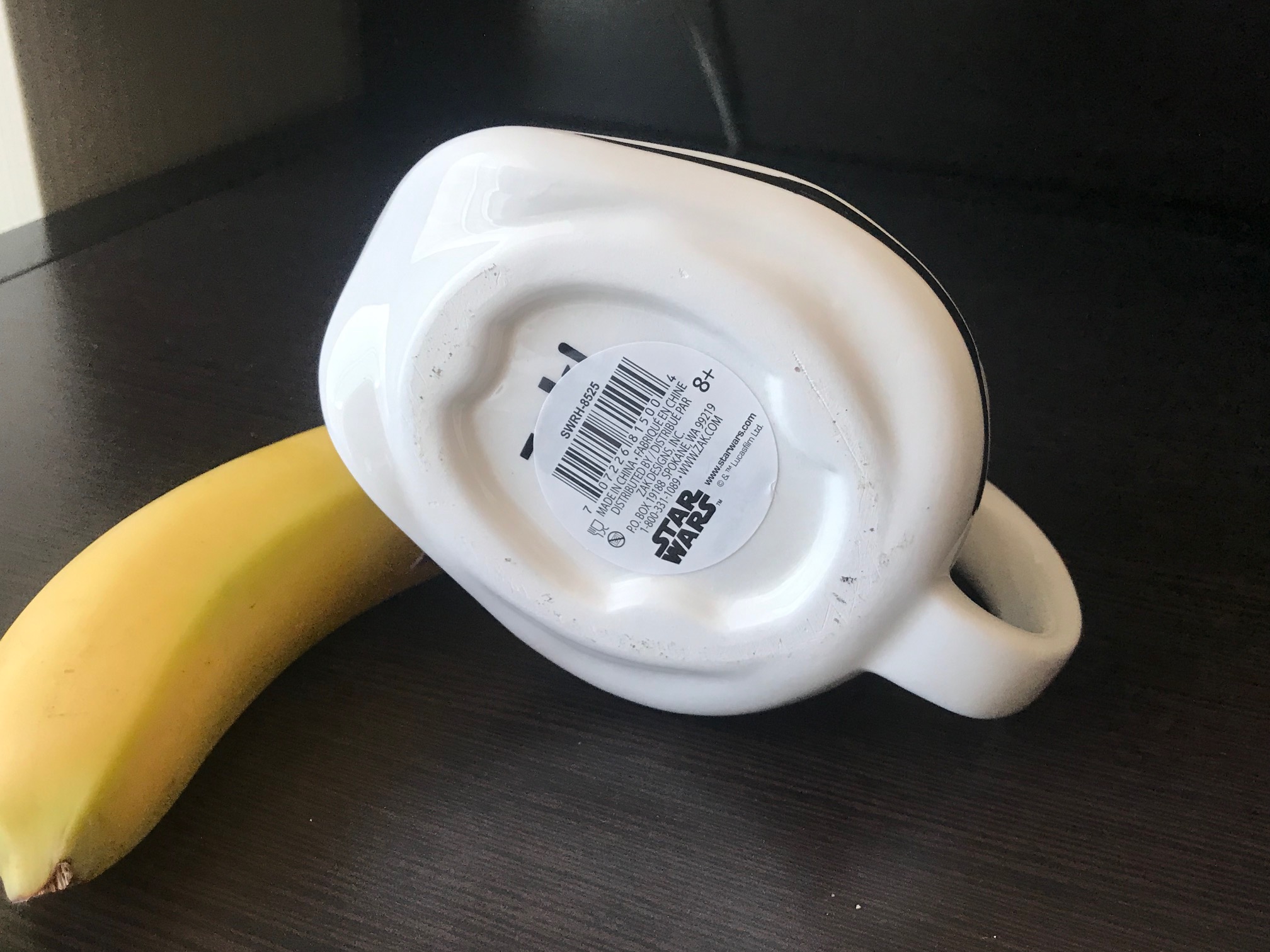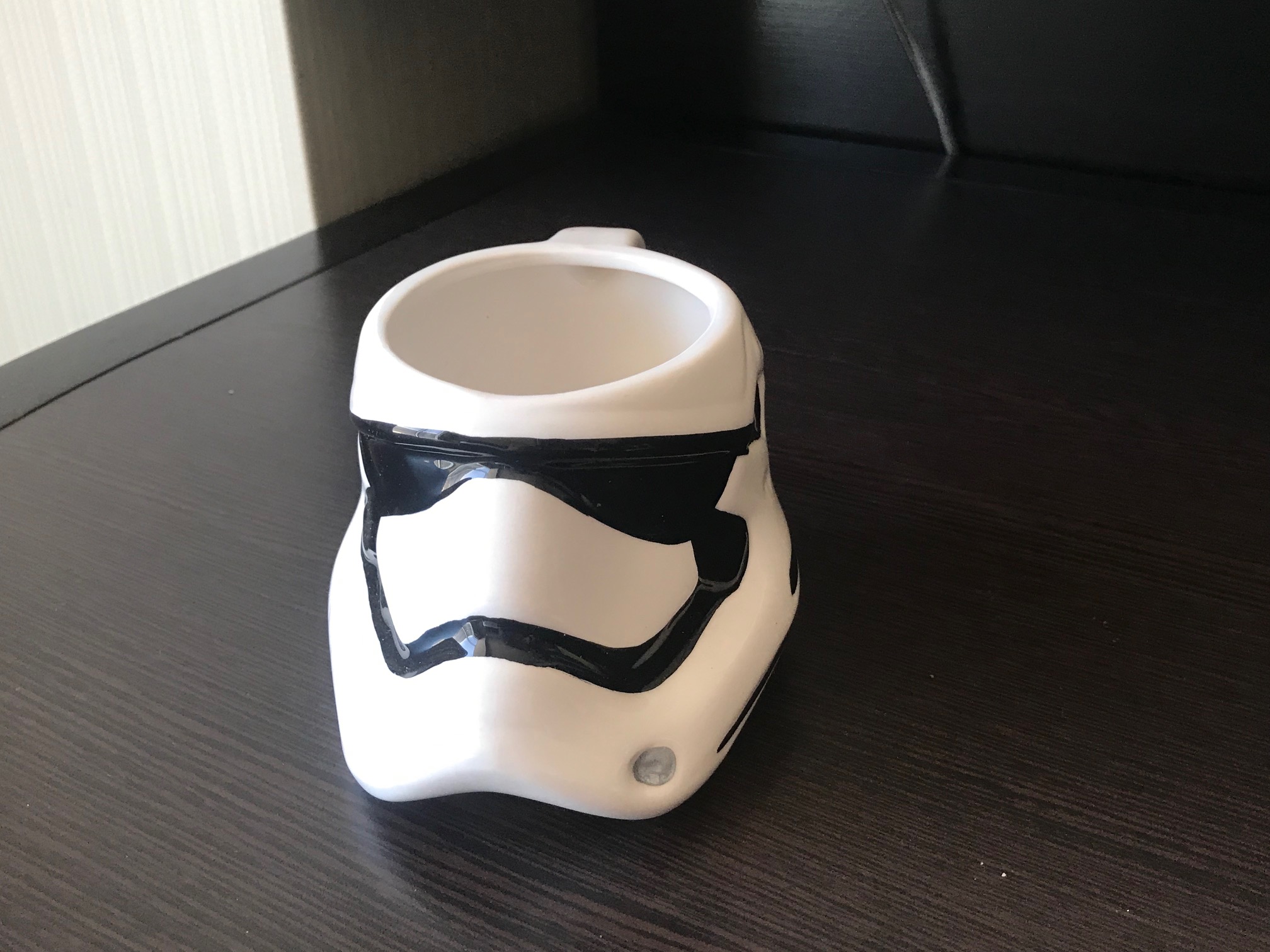Star Wars Storm Trooper ceramic mug (Dollar Store find): 605 ppm Lead (90 is considered unsafe for kids’ items)
For those new to this website:
Tamara Rubin is a multiple-federal-award-winning independent advocate for childhood Lead poisoning prevention and consumer goods safety, and a documentary filmmaker. She is also a mother of Lead-poisoned children (two of her sons were acutely Lead-poisoned in 2005). Since 2009, Tamara has been using XRF technology (a scientific method used by the U.S. Consumer Product Safety Commission) to test consumer goods for toxicants (specifically heavy metals — including Lead, Cadmium, Mercury, Antimony, and Arsenic). All test results reported on this website are science-based, accurate, and replicable. Items are tested multiple times to confirm the test results for each component tested. Tamara’s work was featured in Consumer Reports Magazine in February of 2023 (March 2023 print edition).
When tested with an XRF instrument, the mug pictured here had the following readings:
Black Glazed Areas:
- Lead (Pb): 481 +/- 32 ppm
- Barium (Ba): 317 +/- 52 ppm
- Zinc (Zn): 3,157 +/- 142 ppm
- Nickel (Ni): 834 +/- 108 ppm
- Iron (Fe): 4,477 +/- 319 ppm
- Bismuth (Bi): 59 +/- 16 ppm
- Vanadium (V): 1,529 +/- 102 ppm
- Titanium (Ti): 3,292 +/- 191 ppm
- Cobalt (Co): 2,752 +/- 210 ppm
- Manganese (Mn): 1,641 +/- 303 ppm
White Glazed Areas:
- Lead (Pb): 605 +/- 32 ppm
- Barium (Ba): 455 +/- 49 ppm
- Zinc (Zn): 3,433 +/- 137 ppm
- Iron (Fe): 925 +/- 155 ppm
- Bismuth (Bi): 47 +/- 14 ppm
- Vanadium (V): 1,413 +/- 90 ppm
- Titanium (Ti): 2,911+/- 164 ppm
All tests are science-based and replicable. XRF readings reported on this website are completed for a minimum of 60-seconds each unless otherwise noted. A Niton XL3T XRF instrument testing in “Consumer Goods” mode was used for this testing. All metals detected are listed above (metals not listed were not detected in Consumer Goods mode).
Total Lead content in surface coatings (as detectable with an XRF instrument) is not regulated in dishware in the same way it is regulated in items “intended for use by children.” Anything over 90 ppm Lead in the paint, glaze, or coating is considered illegal if it is a consumer good that is “intended to be used by children.”
For some reason, this company (Zak Designs) has put an “8+” warning label on this mug, which one could speculate was possibly done as a result of the known Lead content of the glaze. This is NOT the first Disney-linked ceramic mug design by this company to test positive for what is considered an unsafe (and illegal) amount of Lead in an item “intended for use by children.” Check out the 2014 Anna & Elsa mug here.
That said, mugs (and dishware) are not generally considered to be items intended for children’s use so the regulatory standard with the 90 ppm limit for Lead in the glaze is not officially applicable to products like this UNLESS it can be definitively proved that they were marketed (and manufactured) with the intention of being used by children.
The levels of Lead in this mug are also concerning, as the higher level of Lead was found in the white/ clear glazed areas of the exterior, which also appears to be the same as the interior of the mug (which I could not test separately because the XRF instrument does not fit inside the mug).
While this mug was likely leach-tested at the time of manufacture (and determined “safe” as a mug for use by adults), leach-testing can produce different results over time — especially with heavy use and use with acidic beverages (like coffee). So while a mug like this might initially pass leach-testing standards at the time of manufacture, it may not continue to be safe over time after the heavy continuous use one might expect for a daily-use mug with beverages like coffee or tea. It is for this reason that I advocate there should be NO LEAD allowed in ANY food-use products. Period.
I think it’s time to have a little chat with Zak Designs, LucasFilm, and Disney about this persistent concern.
As always, thank you for reading and for sharing this work.
Please let me know if you have any questions.
Tamara Rubin
#LeadSafeMama
Never Miss an Important Article Again!
Join our Email List














I have this Star Wars mug, and Disney should be ashamed and held accountable for the lead content as well as ruining the Star Wars franchise. This is a huge safety concern, and Disney licenses with Zack Designs. I would appreciate a 2020 follow up on this story. Thank you for alerting consumers to this serious lead issue in Star Wars character mugs.
Hi John!
Thanks for commenting. I never got any feed back from the manufacturer or Disney on this one, probably because it is not illegal since (technically) the mug is not intended for children (and there is no regulation protecting adults from dishes with a high total lead content / future potential deterioration of surface glazes in items like this…) #sigh.
Tamara